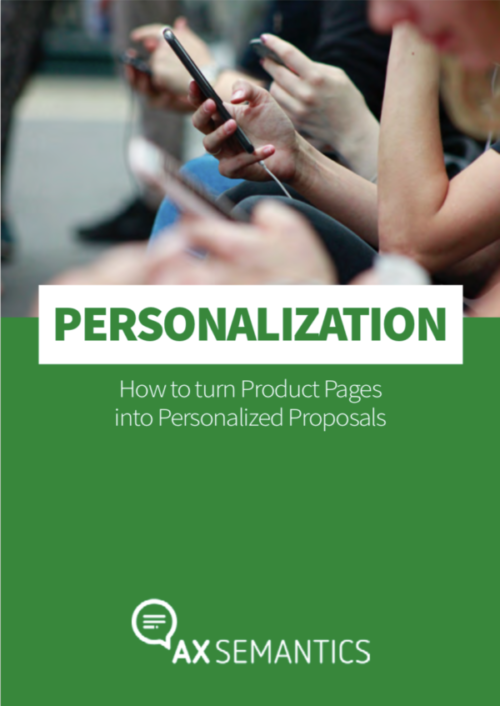First Look into the Whitepaper
Introduction
Like many buzzwords, the idea behind “personalization” has long since been lost. Today the term encompasses any kind of changes to the
customer experience that are based on a specific user. An email with your name in the subject line is called personalization and grouped under
the same banner as, for example, software that generates a completely unique experience for each customer on a webpage.
Business technology terms are often imprecise and overarching, but personalization has to be one of the vaguest. At the same time, the idea of personalization is so critical to eCommerce in particular, that the conversation continues. There is no question that customers want personalization.
In customer’s minds, personalization is simple: make my experience completely unique for me, offer me products that I need, and explain to me why I need them. The University of Texas tried to delve in deeper to understand why customers want personalized experiences. They found a few drivers, Firstly, the idea of overload theory comes into play. Overload theory essentially argues that customers are bombarded with too much information and too many messages online, something I’m sure we can all relate to. Secondly, the idea of user involvement is critical as well. By our nature, we are more interested in something that we feel personally invested in or involved with. Or, to put it another way, if we feel a sense of control and ownership, we are more like to buy a product.
What does this psychology mean for eCommerce companies? Since customers are overwhelmed with content, they are likely to tune out generic content, and fully personalized experiences will stand out for them. Personalization cuts through the generic background noise of your
competition. What’s more, if the content or experience is truly personalized and they feel invested in the relationship with the brand or feel that you really get them, then they are more likely to buy.
To date, eCommerce companies have thought about price as the main means of competing in their market. Yet, psychology tells us is that price is not the main factor for buyers. You can succeed at selling a higher-priced good if you can explain to the customer, at a personal level why this is the right fit for them. The explanation is the experience. Great and personalized experiences generate more value than bargains, for both eCommerce and consumers.
The eCommerce Dilemma: Go Cheap or Go Premium
This discussion of the drivers behind human behavior leads us nicely into a discussion of the challenges facing eCommerce companies today. The COVID-19 pandemic accelerated the trend of online sales and forces traditional bricks-and-mortar stores to go online. The shift to online shopping also increased competition in an already competitive space.
Mark and Jeff are the only ones getting rich. Adding to the competition, Amazon has eaten more of the market share with some estimates for 2020 putting them at owning a staggering 38% of the eCommerce market share in the United States. Amazon has created an unfair competitive advantage thanks to Prime, which allows free overnight delivery to most of the goods sold on the platform. At the same time, Google shopping, which works as an aggregator allowing customers to essentially make choices in the product they buy based on price, has led to the rise of price comparison tools which push eCommerce companies to undercut the price of their competition.
While Amazon created massive economies of scale and Google is organizing a price war, online advertising costs keep rising as more eCommerce companies compete against each other to reach the top of the search bar, either on Google or Amazon itself. Google Ads has been a cash cow for years and Amazon Ads is the fastest growing +$1B revenue business in the world. It is no wonder that Amazon and Google have been the big winners in the last year with the shift to eCommerce. Small and medium sized online retailers are literally funding their competition by paying them for advertising and selling on their platforms.
Put simply, the cost of customer acquisition is rising faster than the eCommerce space itself. Differentiation is harder than ever before. Amazon, Facebook, and Google are getting rich while mid-sized eCommerce companies are struggling.
The problem for mid-sized eCommerce companies is this: you can’t sell at a loss on your way to growth. The biggest players on the market can always undersell you, particularly when shipping is “free” for the consumer as with Amazon Prime. Mid-sized eCommerce cannot compete on price. Small and medium sized eCommerce need a new strategy and need to stop funding Google and Amazon. But the choice isn’t “go cheap or go home”. The choice is between going cheap or going premium.


